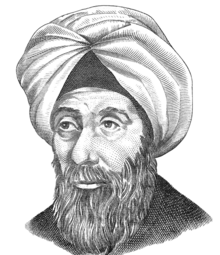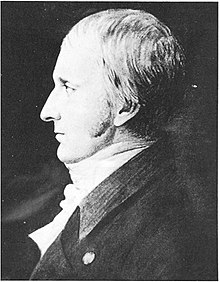What’s the history of photography?
According to Wikipedia the history of photography is made of the events that allowed the invention of a device able to record the world surrounding thanks to the properties of light, a correct although constraining definition, because i believe that is the history of PHOTOGRAPHY and not just of the camera, that include also the various photographyc genres, artistic and cultural movements, the great masters and everyone that until now gave an important contribution to this wonderful world.
Photography originate from observation, study and the application of a physic and a chemical phenomenons, both related to the behaviour and action of light.
When a ray of light enter a dark place through a very small size opening, it project inside the reversed image of the external setting; this phenomenon was well-known since the ancient times, insomuch as some text place the beginning of the hitory of photography since Aristotle, one of the first that observed and made specific experiments relating the behaviour of light rays, and he observed that the light passing through a small hole, projected a circular image. The arabian scholar Alhazen Ibn Al-Haitham came, (before 1039, to the same conclusions, defining the box where all the images reproduced, “camera obscura“).
Right after the year 1000 the phenomenon was studied by many arabian scholars and in the second half ofthe 13th century from the english physicist Roger Bacon. In the 14th century, before the citizen of Messina Francesco Maurolico (Photismi de lumine et umbra) and later Leonardo da Vinci (in the collection of writings known as Codex Atlanticus) explain how the camera obscura and works and at the same time how the eyes works.
The image down was realized by Leonardo da Vinci during his studies on the light behaviour and the functioning of the human eye.In the same period started the studies oriented to the application on the camera obscura.
The latter is realized in various forms, the most common is a box made of wood, provided on a side with a tiny hole made on a thin metal sheet (pinhole), that allow the entrance of light that on the opposite side have a ground glass used to observe the image.
Camera Obscura become an instrument: during the renaissance it’s used to project, on walls or canvases, the traces used to realize drawings or paitings.
It’s used by a painter such as Raffaello and in the following centuries will be used by other artists (Canaletto, Vermeer) and is generally used by those who are in need to reproduce landscapes and perspectives in the possible most faithful way.
Girolamo Cardano The italian scientist and philosopher Girolamo Càrdano towards the half of 1500 apply to the camera obscua a biconvex lens instead of the pinhole in order to concentrate the light rays obtaining in that way an higher clearness and quality of the image.
After few years (1569) the venetian Daniele Barbaro, Professor at the university of padova, shows that the application of an aperture with a smaller size respect the one of the lens improves tha quality of the image.
Daniele Barbaro Speaking of lenses we shouldremember that in 1609 Galiloo Galilei project and build his first telescope.
In 1646 in Amsterdam, Athanasius Kircher build a giant camera obscura for drawing.
Its size is so big that the artist and his assistant can work on the inside.
Kirker realize that the camera obscura phenomenon can work in the opposite way, that is projecting outside and he formulate the idea of the so called “magic lantern”. an image projector very similar to the future film projector, precursor of the slide projector.A further improvement wasthe work of Kaspar Schott, in 1657, that build a camera obscura made of two sliding drawers one inside the other that allowed to move the lens in a way that you could change the distance between the lens and the projection plane and then to focus the image.This system will be used untile the bith of photography, and it will be outdated only after invention of the bellow in the second half of 1800.
Let’s consider now the chemical phenomenon that we mentioned at the beginning. It was well-known to the alchemists of the late middle age that some substance blackened orchanged colour under some circumstances.
The phenomenon was difficult to handle because the conditions when it happened wasn’t clear.
During the XVII century, the famous irish scientist Robert Boyle considered that the blackening that the silver chlorate was subject to, wasdeterminedby the exposition to air and no to light.
The first that used the experimental method to prove that the blackening of certain substance was due of their photosensitivety was the german chemist Johann Heinrich Schulze, Professor in anatomy at the Altdorf university, during some experiments with calcium carbonate, aqua regia, nitric acid and silver, discovered that the resulting compound, basically silver chloride,reacted to light.
He noticed that the substance didn’t change if exposed to the fire light (Orthochromatism opposed to Pancromatism), but it became dark red if illuminated by sunlight, exactly like the most of films and black & withe papers used inthe first half of 1900 based on the unmodified silver halide.
In 1725 he redid the experiment filling a glass bottle that, after the exposure to light, darkened only on the lit side. To the purpose of verify and confirm the result he apply to the bottle paper silouetthes or leaves, observing that, when removed, on the compound remained their brighter shape.
The shape of these silouetthes was naturally temporary because the exposure a light caused in a brief time the darkening of the bright parts.
He called this substance scotophorus, darkness bringer. Once published, Schulze’s sudies caused turmoil in the in the scientific research world.
Some years later, the experiments of the italian physicist Giovanni Battista Beccaria proved permanently that the blackening phenomenon was related to the substances that contained salts of silver and then that is the latter that is tipified by the property of being photosensitive.
Furthermore he wrote an essay on how to use a camera obscura to ease drawing. The image of the persons (out of the camera obscura) was projected on a canvas inside with the painter(the camera obscura was more like a bigroom in this case) that tried to copy it.
Thei method is very similar to the one used in the animation with the rotoscoping technique used at the beginning of the XXth century. The process to use the camera obscura scared the people and Giovanni Battista had to give up the idea after being arrestad and put under trial for witchcraft.
An attempt to apply in a practical way the photosensitivety phenomenon to obtain images was effectuated by Thomas Wedgwood, son of Josiah Wedgwood and heir of the hoonimous dinasty oh british potters.
Student at the Edinburgh university on the end of the XVIIIth century makes serveral experiments using silver nitrate to sensitize some paper sheets and obtain on them the silouetthes of object leaned on them, in a similar way of what schulze did.
He realize light prints on paper or leather bu they was visibile only if lighte by a candle’s flame because the a brighter light make them inexorably disappear.
He is forced to stop his experiment cause of his bad healt condition tha will bring him to death in 1805 at just 34 years.
His friend Sir Humphry Davy describe his results obtained describing the in the essay Method of Copying Paintings upon Glass published on “Journal of the Royal Institution of Great Britain”.
In this text is specified that Wegwood didn’t find a way to stop the blackening process , that is a way to desensistize the paper parts never reached by light, even though a recent exam of some documents exchanged between Wedgwood and JamesWatt brought someon to think that it happened.
“it was going to occur the 7 april 2008 at sotheby’s but the auction was posponed. It was a paper attributed to Thomas Wedgwood with an impressed tree leaf. Until now it was considered a Talbot’s “photogenic drawing” but a little W impressed in a corner made change his mind to the photography historian Larry Schaaf. We might have got to move the production of the first photography of about 20 years.”
In the the same years, between the XVIII and the XIX century will start the experiments of the french Joseph-Nicéphore Niépce, that will have a crucial importance.Joseph Nicéphore Niépce is attributed to the first photo of all times.




















